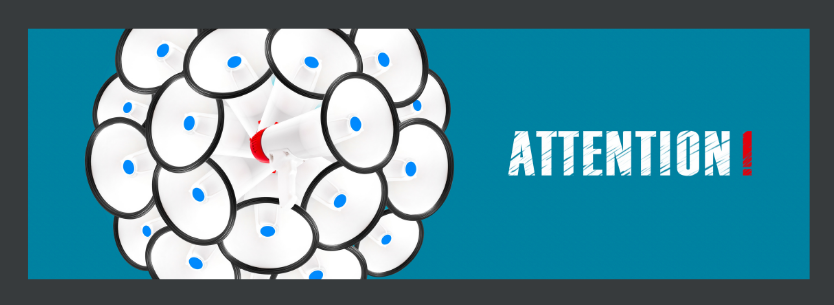Are you worried that your virtual focus group participants will lose focus or get distracted? You are not alone.
One of the best ways to prevent participant attention deficiency is to design an engaging and interactive presentation. Presentations designed to hold participant focus and attention yield higher quality responses and feedback.
Keep participants interested by designing a virtual presentation that constantly requires them to either watch something, listen to something, or answer questions. How can you do this?
 6 Key Elements of Attention-Grabbing Presentations
6 Key Elements of Attention-Grabbing Presentations
Toggling. I like to devise a presentation to include a PowerPoint slides deck with photographs or Google maps. After every few slides, I incorporate questions about what the group has just seen, moving them back to a discussion. Intentionally toggle between Zoom’s Share Screen mode and Gallery View, changing the group’s screen layout and drawing their attention. Plus, you can keep an eye on folks whose attention might have wandered to off-screen interruptions.
Visual Interest. Be wary of presentations that require long periods of reading out loud or video clips of five minutes or more. It is easy for a participant to tune out monotonous material, especially when they have a cell phone at their fingertips. If the presentation requires reading or lengthy clips, try to cut the material into smaller chunks and intersperse questions.
Limiting Share Screen. Share Screen is a fantastic Zoom tool that makes presenting slides or videos easy. However, it is best not to leave the virtual focus group in the Share Screen mode for too long. As a moderator, it is difficult to track the group’s faces for body language and to monitor who has spoken or not spoken in response to a question. The size of each participant’s face in Gallery View is also very small. While there is a work-around to record each person individually, it’s the attention and feedback that is crucial during the focus group. Therefore, it is highly recommended to use Share Screen for shorter periods of time and turn it off for group discussions.
Chatting. Open discussion can be great, but in a virtual setting usually only one person is talking at a time. This can become tedious. Participants can lose their train of thought while waiting to speak, or change their responses after hearing others. With the Chat function, participants can instantly respond with thoughts and even questions. If you want to stop members from influencing each other, you can ask them to send their Chat to you privately. Bonus: the chat is saved after each meeting, making for quick review of participant thoughts/responses.
Polling. Polling is an interactive way to break up a presentation and ask questions in a different format. With Zoom, you have to create the polls before you start the virtual focus group. This requires advance preparation of the questions, as compared with the Chat, where you can type in any question on the fly.
Breakout Rooms. In this scenario, a participant goes into a breakout room with an assistant who asks specific questions and takes down their responses. This serves to isolate each participant and prevents any influence on or from the others and to elevate the significance of the feedback. This process can be time consuming as the host must move participants in and out of the breakout room. Additionally, the main group will need to be engaged with a different task while awaiting their turn. This Zoom feature is very beneficial but requires a level of comfort with using the function – meaning practice, practice, practice.








